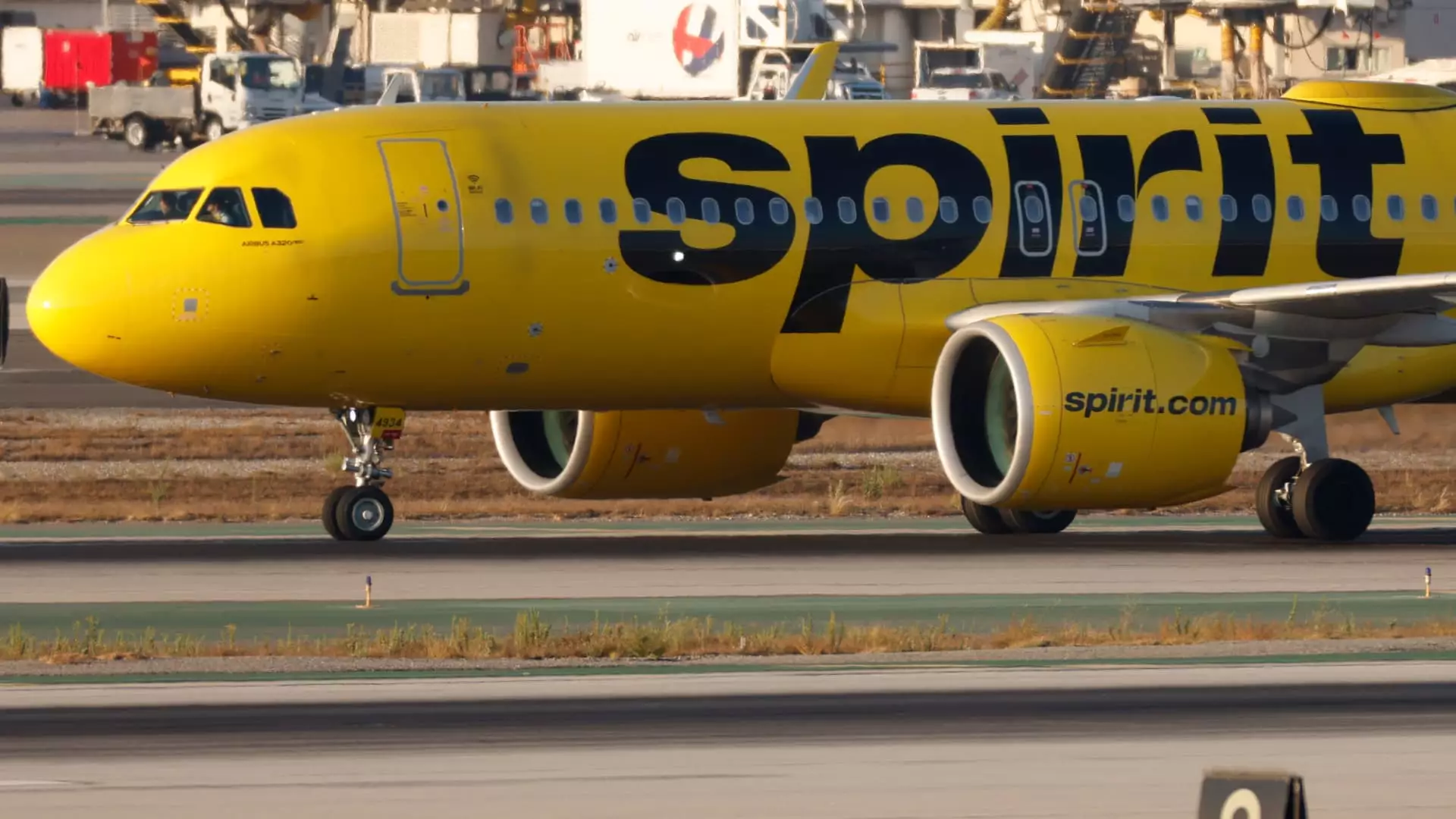Spirit Airlines has long been associated with the ethos of budget travel, having carved out a significant niche in the aviation industry over the years. However, on the backdrop of escalating challenges, the airline has officially filed for bankruptcy protection—a shocking move for a carrier that once thrived in the competitive market of low-cost flights. With the filing pointing to assets and liabilities ranging from $1 billion to $10 billion, Spirit now finds itself in a precarious position, supported by a $300 million debtor-in-possession financing deal orchestrated with its bondholders.
Bankruptcy is not new territory for the airline industry, yet it is particularly notable in this case because Spirit is the first major U.S. airline to seek Chapter 11 protection since American Airlines did so 13 years ago. The stakes are high, and the repercussions extend beyond corporate boardrooms and wallets; they directly impact loyal customers who have trusted the airline for cost-effective travel options.
Recent Struggles and the Road to Bankruptcy
The circumstances surrounding Spirit’s bankruptcy filing are a culmination of misfortunes that have plagued the airline in recent years. From severe operational issues—including an engine recall that left a significant portion of its fleet grounded—to external pressures like rising operational costs and a failed merger with JetBlue, the challenges appear to have snowballed. Such turbulence has resulted in a staggering share price decline of over 90% this year, a testament to investor confidence eroding in real time.
Moreover, the airline’s attempts to negotiate with credit card processors regarding loyalty bonds fell short, further tightening its financial restraints. The $1.1 billion obligations due next year loomed large, and Spirit sought—but failed—to delay these obligations long enough to stabilize operations. These factors have combined to create an unsustainable business model, leading to a loss of over $335 million in the first half of the year alone.
Despite the bleak outlook, Spirit Airlines contends that it will continue its operations even while undergoing bankruptcy proceedings. CEO Ted Christie offered assurances to customers that bookings and loyalty points remain intact. In a letter to patrons, he emphasized that their travel plans will not be disrupted, urging travelers to maintain their trust in the brand as it strives to navigate this rocky terrain.
To shore up liquidity, Spirit has resorted to drastic cost-cutting measures, including the sale of 23 Airbus jets for $519 million amid a broader shortage of aircraft in the industry. Such decisions underline a necessity for the airline to refine its operational strategies in order to remain competitive. Additionally, Spirit has introduced bundled fare options in response to market shifts, including perks typically associated with more expensive carriers, such as seat assignments and additional legroom.
Concerning personnel, the airline has begun the process of furloughing pilots and cutting routes as a means to mitigate financial losses. Yet, industry analysts warn that the restructuring may require more drastic reductions in capacity to restore viability over the long term.
The implications of Spirit’s struggles extend past its own balance sheet and into the broader airline market. The airline has long been a pioneer in the low-cost travel segment, and its eventual fate may serve as a bellwether for other budget carriers. The introduction of ancillary fees has drawn criticism, yet it was also seen as a necessary innovation that allowed Spirit to thrive in a highly price-sensitive marketplace. With increasing operational costs following the pandemic and rising competition from both incumbent and emerging carriers, the ability of airlines like Spirit to adapt will undoubtedly be tested.
The blocked merger with JetBlue has also raised questions about competitive dynamics in the evolving landscape. A federal judge’s ruling asserting that the merger would result in higher fares and less competition has left the industry pondering where budget airlines fit within that structure. With major players like Delta and American Airlines adding similar low-fare options, the need for Spirit to define itself amidst a saturated market has never been more critical.
A New Era on the Horizon?
As Spirit Airlines embarks on this new chapter marked by court oversight, industry watchers are keen to see how it will leverage its existing assets and loyal customer base. Discussions of potential mergers, particularly with Frontier Airlines, have begun circulating as viable next steps as stakeholders analyze how to stabilize the brand for the future.
Ultimately, the trajectory of Spirit Airlines during this crisis could provide valuable lessons on the sustainability of budget airlines in a rapidly changing travel landscape. As they navigate bankruptcy proceedings, their approach to trimming operational fat while maintaining customer service and affordability will shape not only their destiny but could also send ripples through the entire airline industry. Only time will tell if Spirit can reinvent itself and reclaim its position as a leader in budget air travel.

